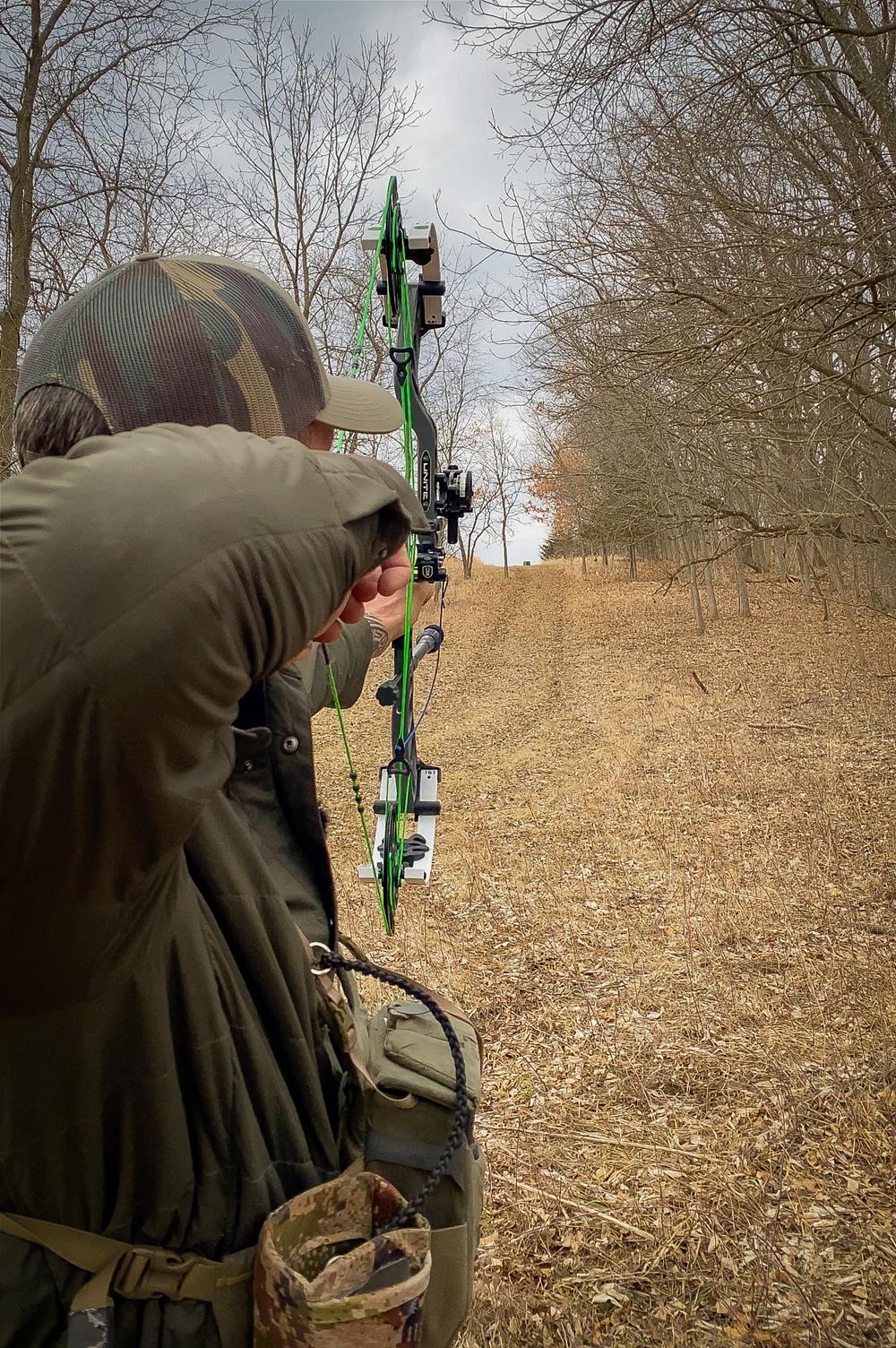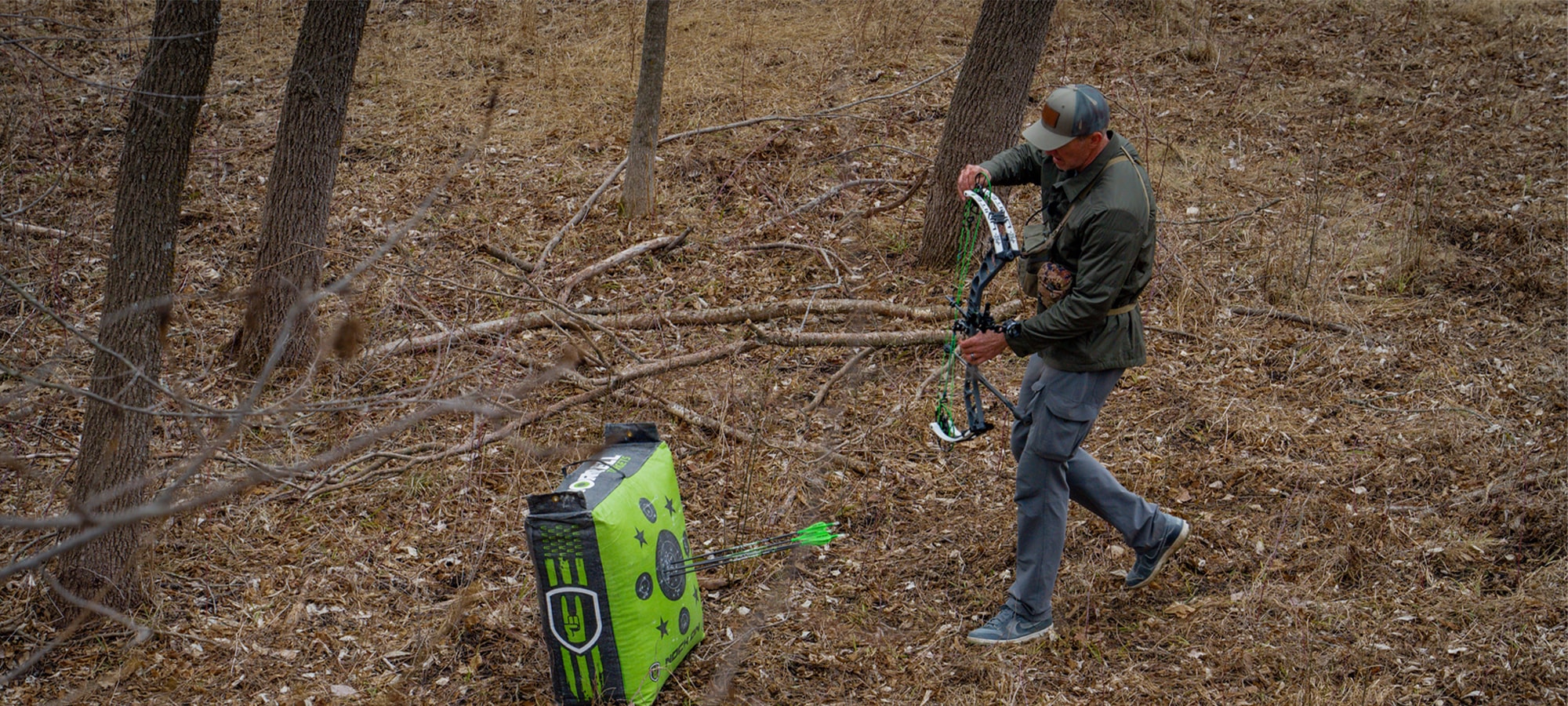Building Bowhunting Stamina
In recent years there’s been a much needed emphasis on being better equipped physically as a bowhunter. This is such a critical topic and one that is long overdue in the industry. I have credited my physical condition for decades as being a crucial component of my success both as a bowhunter and as a target archer. There was a time when people would criticize what working out was really doing for your archery versus just practicing more. My argument has always been that practice allows you to make the shot, conditioning is what gets you the shot but then lets your maximize it with accuracy. Over the years, I trained a lot of different ways as preparation for difficult hunts or hunts that certainly require physical stress prior to opportunity. What I’ve learned is there are some ways to incorporate both! What I tell people is that you need to divide these different things into 3 topics. PRACTICE, PHYSICAL PREPARATION and lastly, PHYSICAL PRACTICE!. Physical practice is what I’m here to talk about today.
Practice with a purpose
It’s important to understand that practicing with the purpose of conditioning is going to require a slightly different mindset. Because you will be practicing at higher volumes and with a higher heart rate, there will naturally be some stress factors that come into play. One of the obvious one is going to be the amount of sight movement and “steadiness” or lack there of. Remember, practicing with these stressors is the purpose of the training so I mentally tell myself, “movement is ok, breathing a little heavier is ok!” What you don’t want is to try to practice for stamina but then letting the tiredness, blood pumping, and added sight movement to diminish your shooting technique. The purpose of the practice is to let it help you acclimate to being able to perform in those instances. Mentally, I tell myself “this should be harder to do, but not if I just commit to making my shot feel the same as when I’m in a relaxed state.” Say this out-loud to yourself. “It’s OK to be unsteady, you just need to pull through it. I’m going to commit to it!” Believe it or not, you verbally assuring yourself “it’s OK and expected” will help in maintaining your composure. When I practice for stamina there are two things that I focus most on, Interval cardio and higher volumes of arrows.
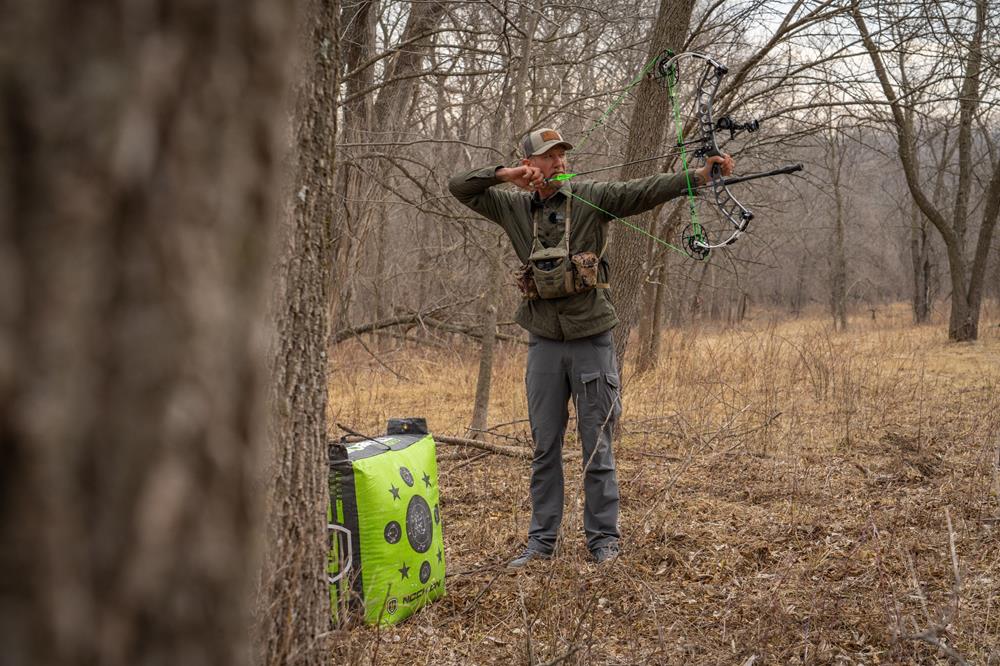
Interval Endurance
When I think of bowhunting stamina one of the most obviously things to get efficient at is your cardio. You cardio strength is not only going to be produced in this shooting routine. Good cardio conditioning comes from the prep you do on a bike, treadmill, pavement or specific rucks tailored for boosting cardio. This isn’t a replacement for that, it is what you will do in addition of that so that you can tie in your shooting with the fitness. I personally get most of my cardio training either from weighted rucks at a power walking pace and also from interval training on a bike. Each person is different from that aspect, but it’s important to stress that to perform this method of archery practice training, you should first have a decent baseline of cardio or be working on one.
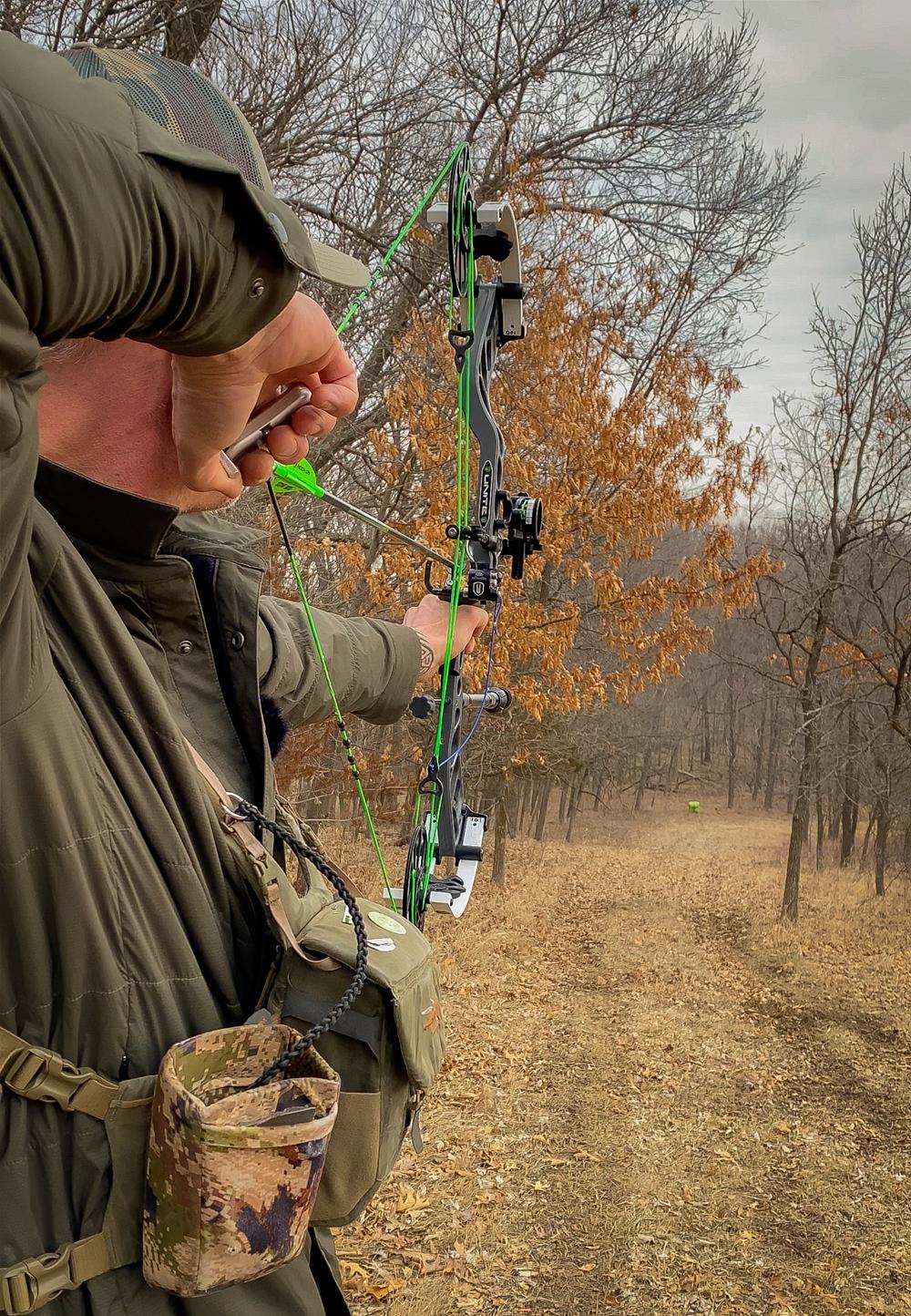
When I practice for endurance the first thing I do is find a place where I can place a target where I’m shooting uphill or downhill at it. Ideally you want some angle to your shots. The reason is, you will be practice as a higher pace to simulate added heart rates and pressure. I personally have spots where I can set two targets, where one is downhill and one is uphill. I make my shots but then instantly sprint down to pull arrows and reset to make another round of shots to then instantly sprint back. I refer to these as my “down and backs”, just like what we all used to do for conditioning on sports team practice. In the video I did for this article, I had two targets both 100 yards apart. I would make shots, hustle to the target to pull arrows, focus on my breathing and heart rate, and let it lower to then quickly proceed for another round.
If you don’t have a place to do targets on either side then you can modify by sprinting down to pull arrows, then sprint back to the line to repeat. As you fatigue more and more, you will need to mentally tell yourself to be more and more committed to making a good shot and not just “waiting for a good shot”. A common error people make when they are tired is over-aiming at a target and “waiting for the shot” vs being committed to “making the shot”. Pull with more intent! I coach students like this. Whenever your are practicing with a purpose you should be simulating the stress factors of hurrying to a spot, to then have a short opportunity for a shot on the animal. Things happen fast in real life so you need to be quick about getting your breath, gaining composure and committing to making a quality shot. I tell students that when you are gassed and the heart is beating hard while being active you have to already be thinking about what you need to do for a good shot. Multi-task by consciously thinking about good form and good shot execution. BREATHE DEEP, REGAIN YOUR HEARTBEAT and then COMMIT TO THE SHOT. Same is true for these shots during your practice to build stamina and simulation. You will be tired, you will be a little shaky, but you must commit to the trigger, trusting the pin movement and pulling through it with maybe even more acceleration than on a calm flat shot. Use the transition time when you’re moving and getting your breath to visualize making a perfect shot. Create your own mental picture of you- loading an arrow out of breath, breathing slow and deep and letting that heart rate steady. Then Visualize drawing the bow smooth and properly aligning the sight quickly and getting on target and then pulling through the shot with added urgency and manifest a vision of your arrow landing perfectly.
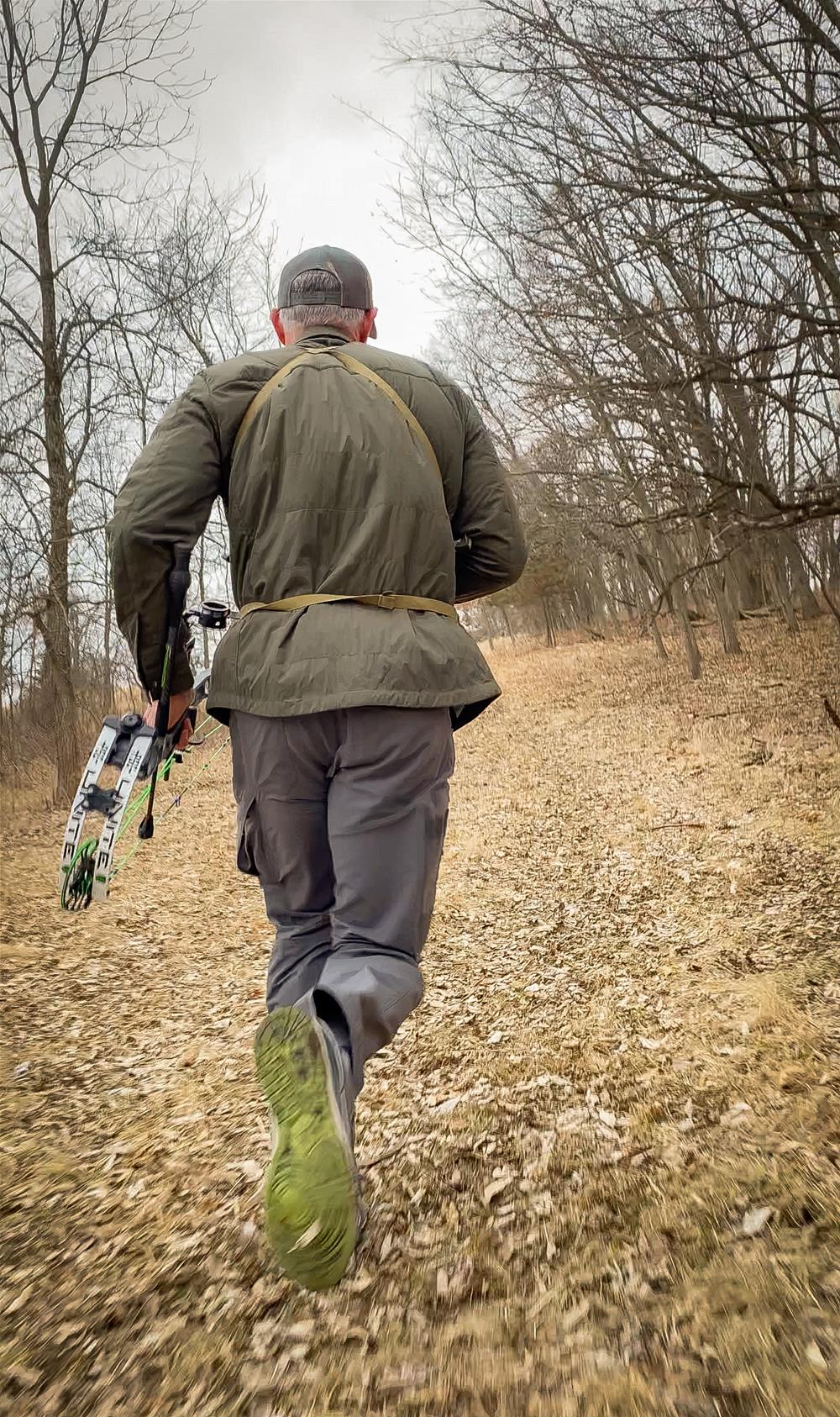
REPS without REST
When training to boost stamina, you need to avoid rest between reps. I shoot a minimum of 4 arrows per round and then try to work towards 6 arrows per round. When shooting down and back style training with uphill and downhill shots back to back you will quickly rack up numbers of arrows shot in a short window of time. More than double in most cases! This is awesome because you are serving multiple purposes here. You are building stamina of the body in relation to archery shooting strength, but also building the over body performance to be able to shoot more quality shots, even while under stress. There is an important thing to remember with this style of shooting. There’s a fine line between conditioning the body to shoot with stamina VS sacrificing the quality of practice. Remember, if you start to make bad shots then you run the risk of making those bad shots a habit. You don’t want to engrain poor technique. What you want to do is learn to push your limits on how winded you can be and still make a lethal shot without causing yourself to “rush or anticipate” the shots. Finding the balance between building stamina or tolerance of physical exertion and not forcing poor technique is something you will need to learn.
Focus on the Breathing
The last helpful hint I want to give you on this subject, is the importance of breathing! This training gets tough as you go and it gets tough to maintain your shot quality with every arrow. Breathing helps the most. The key is regaining control of your breath which then regains control of your heart rate. Your heart rate is what helps you control the moment but also your movement! Breathe deep and through your nose if you can. Feel your heart rate and if it’s still beating out your neck, then breathe deeper and slower. Wait to get your control back! While you are breathing it’s such an important time to start visualizing your next round. Visualize your shot routine and then how you will make good shots even when you’re tired. This is something I can’t stress enough. Remember the purpose of this whole drill is to better your performance when having to get after it on the mountain or in the field. You won’t improve unless you can get better and better about keeping the quality of your arrows downrange. Focus on quality shots even when you feel like you barely have any gas in the tank. Breathing is what gets you back to baseline!
